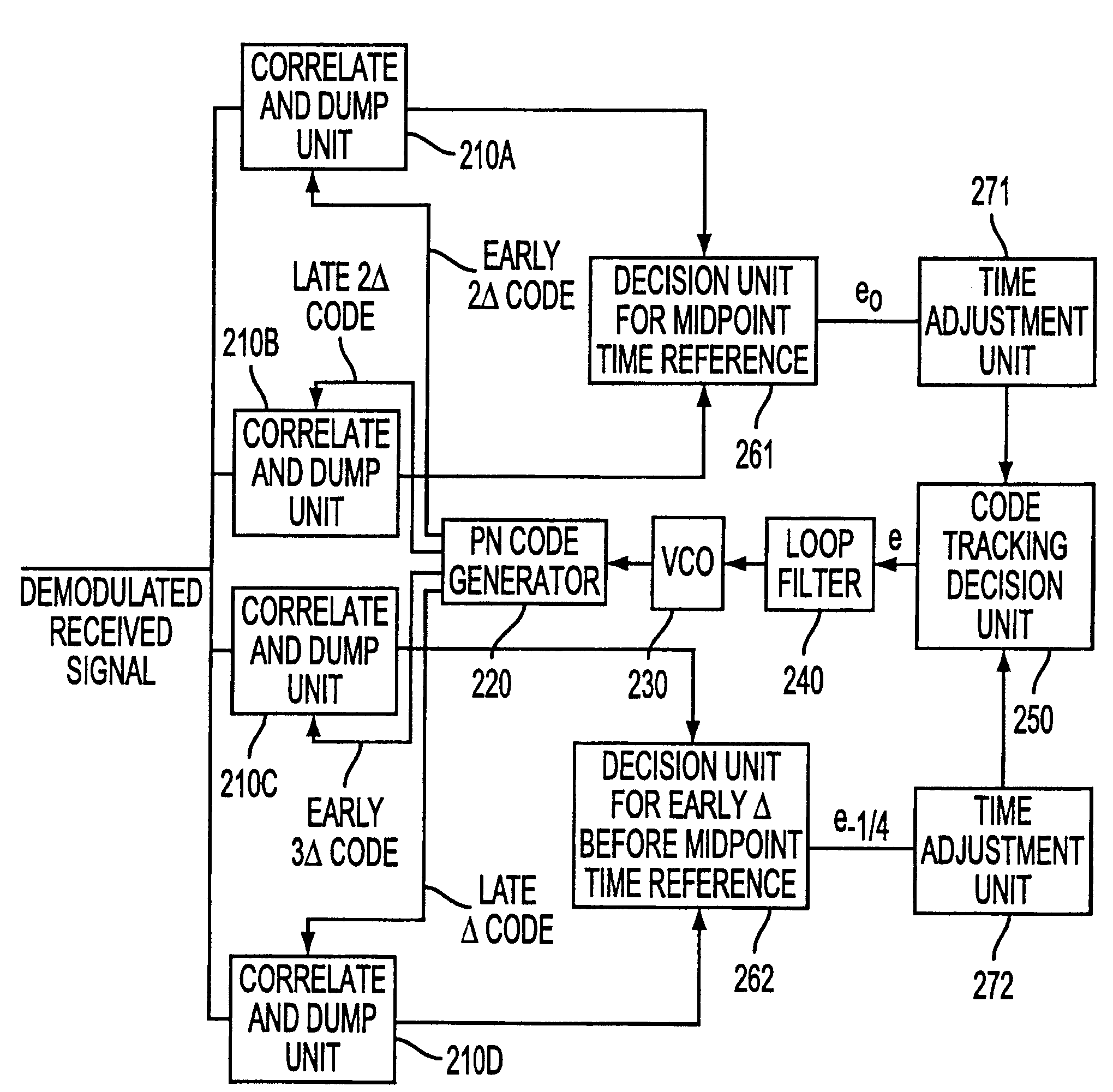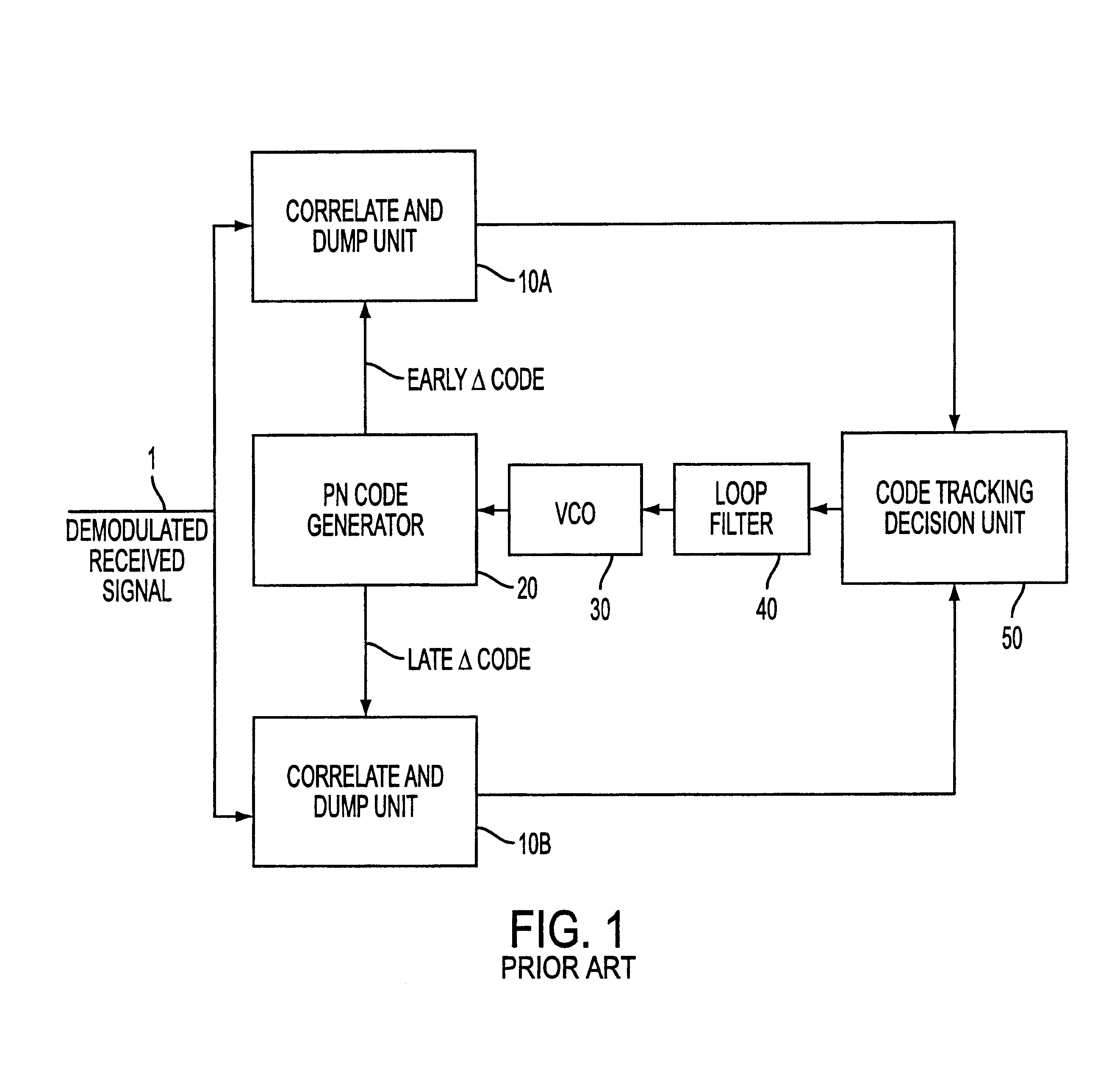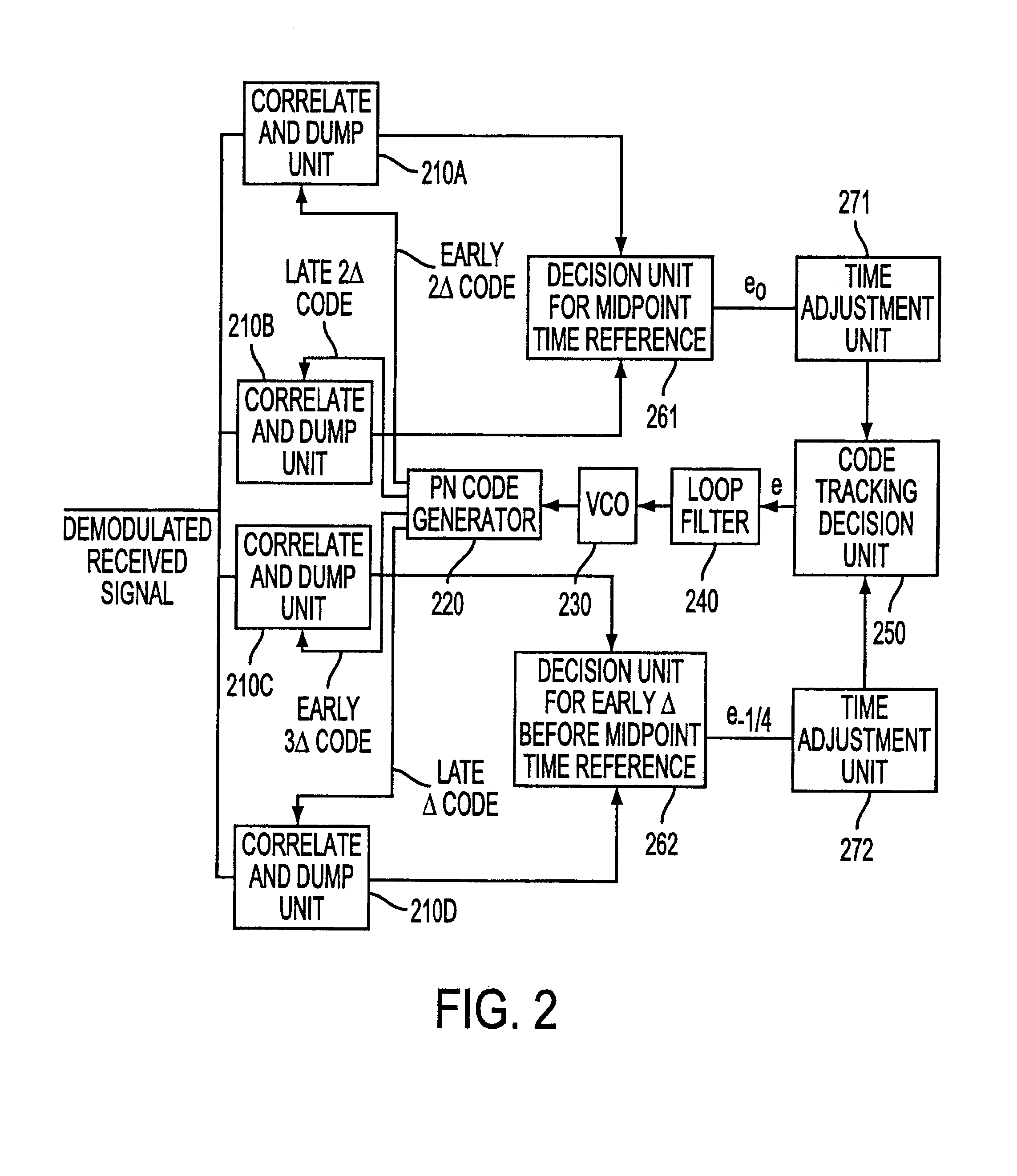Delay lock code tracking loop employing multiple timing references
a code tracking and delay lock technology, applied in multiplex communication, digital transmission, electrical equipment, etc., can solve the problems of tracking loop losing lock, few samples in the chip to be inaccurate, and the likelihood of disturbed samples that introducing a tracking error is still not as low as acceptable, so as to reduce the occurrence of lockloss, effective tracking, and high chip rate transmission
- Summary
- Abstract
- Description
- Claims
- Application Information
AI Technical Summary
Benefits of technology
Problems solved by technology
Method used
Image
Examples
Embodiment Construction
[0023]In the following description, the invention will be described in detail, first by way of an example of a double reference code times tracking loop, with reference to the double timing references DLL tracking loop shown in FIG. 2.
[0024]FIG. 2 illustrates a double timing reference DLL embodiment according to the present invention. This embodiment employs two reference code times, one for the midpoint of a chip denoted T0 and the other for one-fourth chip duration timing offset preceding the midpoint of the chip, denoted as T−1 / 4. Suppose these are eight samples per chip. The early code will be advanced four samples and the late code will be delayed four samples for tracking timing reference T0 in one DLL loop. On the other hand, the early code will be advanced six samples and the late code will be delayed two samples for tracking timing reference T−1 / 4 in the other DLL loop respectively. The early and late codes are generated by adding appropriate delay elements to the local PN ...
PUM
 Login to View More
Login to View More Abstract
Description
Claims
Application Information
 Login to View More
Login to View More - R&D
- Intellectual Property
- Life Sciences
- Materials
- Tech Scout
- Unparalleled Data Quality
- Higher Quality Content
- 60% Fewer Hallucinations
Browse by: Latest US Patents, China's latest patents, Technical Efficacy Thesaurus, Application Domain, Technology Topic, Popular Technical Reports.
© 2025 PatSnap. All rights reserved.Legal|Privacy policy|Modern Slavery Act Transparency Statement|Sitemap|About US| Contact US: help@patsnap.com



